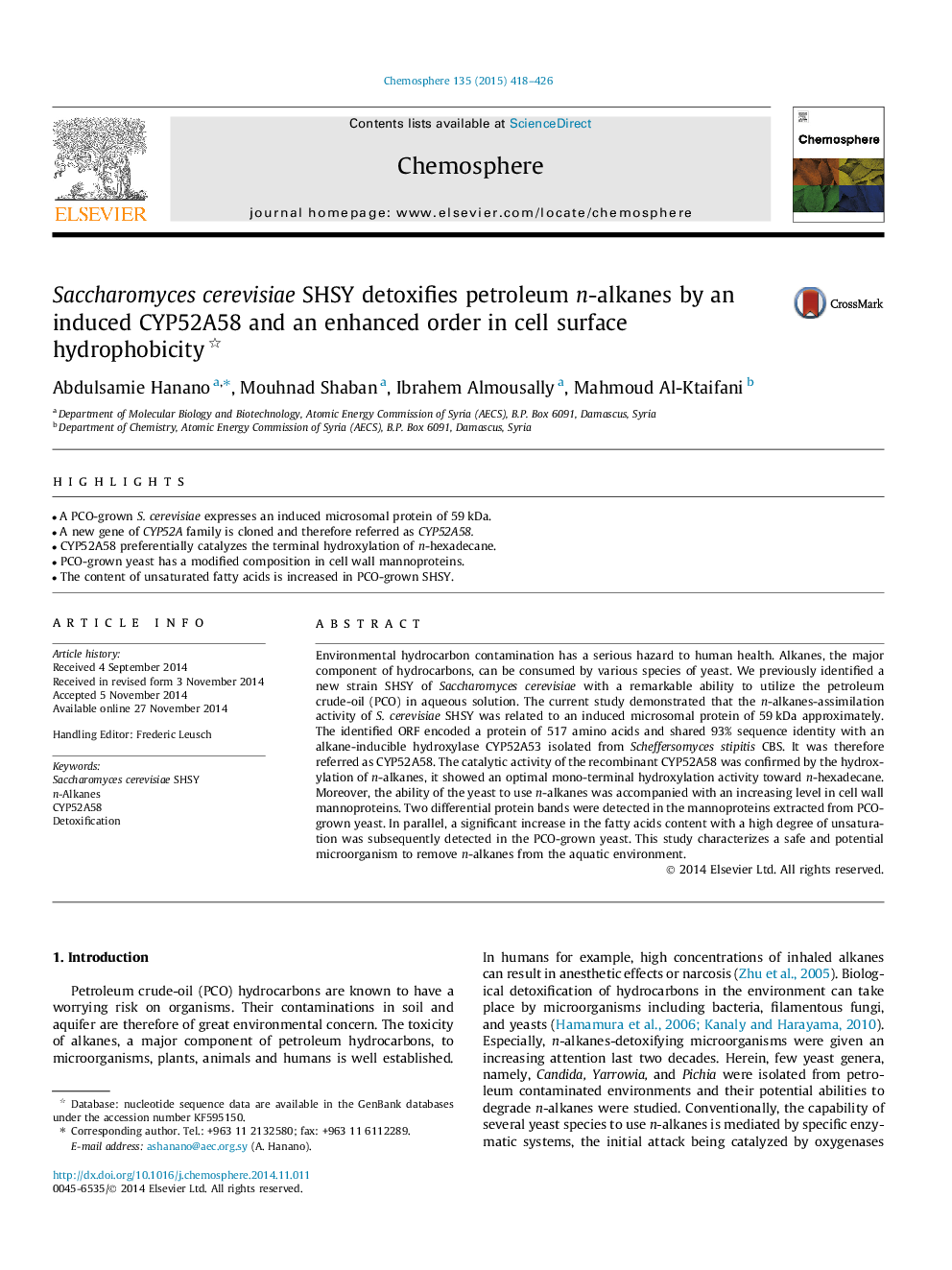| Article ID | Journal | Published Year | Pages | File Type |
|---|---|---|---|---|
| 6307903 | Chemosphere | 2015 | 9 Pages |
Abstract
Environmental hydrocarbon contamination has a serious hazard to human health. Alkanes, the major component of hydrocarbons, can be consumed by various species of yeast. We previously identified a new strain SHSY of Saccharomyces cerevisiae with a remarkable ability to utilize the petroleum crude-oil (PCO) in aqueous solution. The current study demonstrated that the n-alkanes-assimilation activity of S. cerevisiae SHSY was related to an induced microsomal protein of 59Â kDa approximately. The identified ORF encoded a protein of 517 amino acids and shared 93% sequence identity with an alkane-inducible hydroxylase CYP52A53 isolated from Scheffersomyces stipitis CBS. It was therefore referred as CYP52A58. The catalytic activity of the recombinant CYP52A58 was confirmed by the hydroxylation of n-alkanes, it showed an optimal mono-terminal hydroxylation activity toward n-hexadecane. Moreover, the ability of the yeast to use n-alkanes was accompanied with an increasing level in cell wall mannoproteins. Two differential protein bands were detected in the mannoproteins extracted from PCO-grown yeast. In parallel, a significant increase in the fatty acids content with a high degree of unsaturation was subsequently detected in the PCO-grown yeast. This study characterizes a safe and potential microorganism to remove n-alkanes from the aquatic environment.
Keywords
Related Topics
Life Sciences
Environmental Science
Environmental Chemistry
Authors
Abdulsamie Hanano, Mouhnad Shaban, Ibrahem Almousally, Mahmoud Al-Ktaifani,
